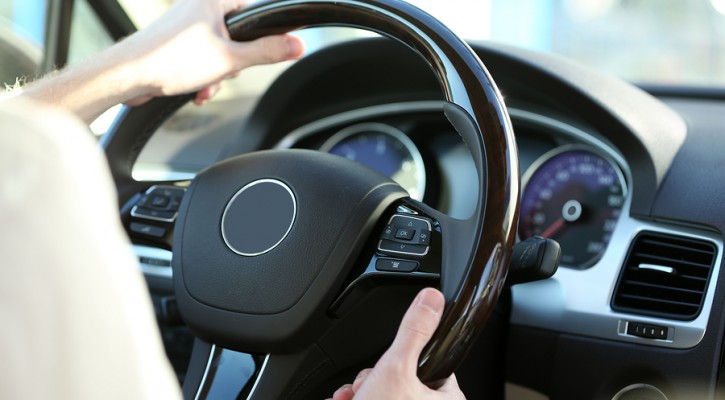Tag Archive: Driving test

Ask The Driving School Instructor: What’s The Best Way To Take A Driving Test?
February 13, 2015
Question: What is the best way to take the written driving test?
Answer: A lot of people have what educators refer to as “test anxiety.” They get so nervous about a test that, even though they may know the material, their anxiety about the test can make even an easy test hard. It doesn’t have to be that way. Here are a few tips to help you be prepared for the test.
Before we go on, we first have to have to understand how the test works and learn a couple of terms. Most state tests are given by computer. The questions come from a large database of up to 1,000 questions and the computer will randomly pick the required number of questions from that database. Because the original database of questions is so large, if you should fail the test and have to take it again, you probably won’t see many of the same questions on your second test.
Each question will consist of the question, only one correct answer, and two or three wrong answers known as “distractors.“
Depending on the state, you may or may not have a time limit in which to take the test. In the case of Florida’s test, you have one hour to answer 50 questions. That means you have two full minutes for each question. That really is a long time and you won’t spend a full two minutes on each question so that gives you more time to answer the harder ones.
So here’s the best way to take the test.
1. Know the material! No matter how smart you may be, if you haven’t studied the material, you stand a good chance of failing the test. For the driving test, the best source of study is the state driver’s handbook. You can get a printed copy from the DMV or download a free copy online from your state’s DMV website. For Floridians, you can download a free copy here: Florida Driver Handbook. You can also take practice tests online that will help you prepare for the test.
2. Read the question carefully! A lot of questions are missed because the test taker didn’t read the question correctly. Take your time and read it carefully so you know exactly what kind of answer the question is looking for.
3. Read all of the answers/distractors carefully. One single word can turn an answer from a correct answer into a distractor.
4. Eliminate the wrong answers. If you aren’t completely sure of the correct answer, you can help yourself by eliminating the wrong answers first. Then you can more easily choose the correct answer.
5. “All of the above” or “none of the above” isn’t always the correct answer; don’t automatically choose those answers without reading all of the other answers first.
6. If there is more than one answer that you absolutely know is true, then “all of the above” is probably the correct answer.
7. If there is one answer that you know for sure is correct, then “none of the above” won’t be the correct answer.
8. If you aren’t sure of the correct answer and you have two answers that appear to be correct, read each one carefully and look for that possible single word that could turn it into a wrong answer. If, after eliminating the ones you know are wrong, you still aren’t sure, then go with your best guess.
9. Your first choice is probably the best choice. Don’t try to second guess yourself and go back and change an answer. The only time you should go back and try to change an answer is if a later question makes you realize that you were wrong on the previous question. Still, don’t change it unless you are absolutely positive that you were wrong the first time. If you aren’t sure, leave it alone. Remember that you’re using up time to go back and change an answer.
Good luck!

Ask The Driving School Instructor: Hand Over Hand Steering
November 16, 2014
Question: Do I need to use the hand over hand technique while making a left or right turn, some people say yes some no. Can I just keep both hands on steering wheel, I have a test coming up this week.
Answer: There’s nothing in the Florida driver’s handbook about using the hand over hand steering method. The manual only says that you should keep both hands on the wheel and maintain control of the vehicle while steering. As a former license examiner for Florida’s Division of Drivers Licenses, I can tell you that I didn’t make drivers use that method during the test; I only checked to see if both hands were on the wheel, that they were in control, and could steer the car in the right direction.
During the test, you should keep both hands at the 8 and 4 o’clock position on the wheel. When making left or right turns, the best method to use is the “push and pull” method. That means, if you’re making a right turn, pull the wheel with your right hand and push with your left. When straightening out, just relax your grip and let the wheel slide naturally back to the neutral position.
The proper placement of your hands and the push and pull method are best explained in the video below.
Good luck on your test.

Ask The Driving School Instructor: Will New Laws Be On The Driving Test?
April 14, 2014
Question: I heard that there are some new driving laws that were passed in Florida this year. Will those they be on my driving test?
Answer: The Florida legislature has considered some changes to the driving laws this year but none of them are laws yet. If they pass the legislature and are signed into law by the governor, the laws probably won’t take effect until July 1st at the earliest. Some will go into effect on Oct. 1st and some on January 1st of next year.
Your written driving test will be based on information in the Florida Driver Handbook and the latest version of that handbook was published in 2014. If you notice, at the beginning of the handbook, there is a section called “Important Law Changes”. That section will have all the new laws that have gone into effect as of the date the handbook was written.
You’ll only be tested on the information that is currently in the handbook and not on any laws that may have been passed since then. Of course, if you go to take your behind-the-wheel driving test, you should be aware of any new laws that may have gone into effect and, even if a law, such as the new law against texting and driving, isn’t mentioned in the manual, it’s a good idea to obey it.

Worried About Passing Your Driving Test?
October 2, 2012
How much have you practiced your driving skills? The GDL Laws of most states require you to get a learner’s permit or instruction permit first before you get your driver’s license. This is the time when you practice your driving skills either with a parent or driver education instructor. Most states require you to have a minimum of 40 to 50 hours of driving practice during the learner’s permit stage. It is suggested to use a driving experience log so you practice all the maneuvers you’ll be tested on. Here is an example to PRINT.
When you are ready to get your license remember the following driving skills as this is what they will be testing you on during the road test:
- Obey the traffic signals and signs
- Avoid hitting the curb or cones while parking
- Three point turn is the most comment reason for failing the exam – so get lots of practice during your learner’s permit phase especially on narrow streets!
- Put on your seat belt before starting the vehicle.
- Properly yielding to other traffic when changing lanes.
- Using your turn signal when turning, changing lanes, or turning into or backing out of a parking space
- Safe driving around school buses and school zones.
- Maintain a two to three-second following distance.

Study Shows That GDL Laws Work; To An Extent
July 30, 2012
A study published in the Journal of the American Medical Association in September 2011 shows that the death rate for teen drivers under the age of 18 has fallen dramatically over the past several years. However, the good news in this study comes with a downside; the rate of fatal crashes for teen drivers over the age of 18 has risen. The reason for the increase isn’t totally certain but there are a couple of factors that some feel have led to the increase.
The Graduated Driving License (GDL) laws are working as they were designed. GDL laws place restrictions on new teen drivers that limit the number of passengers they can carry, the hours that they can drive, and their ability to use cell phones while driving. These laws were designed to limit all of the distractions that lead to so many teen deaths and, according to the researchers, they have resulted in 1,348 fewer crashes among 16 year olds.
Part of the reason for the increase in the death rate for 18 year olds is that they are now free of those restrictions and, with more passengers in the car and the ability to drive late a t night, they may be entering into driving situations that they have never experienced before and are unable to cope with.
Another reason that some experts have noted is that, with the restrictions placed on 16 year olds to complete driver training prior to getting their license, many teens are now waiting until they are 18 before getting a license. At the age of 18, there is often no requirement for any type of formal classroom or behind the wheel training. The requirement to hold a learner’s permit for a year and document up to 50 hours of supervised driving experience is also lifted for 18 year olds.
By waiting until they are 18, these drivers can often get their license in just a few weeks by passing what is generally a pretty easy driving test at the DMV. They are foregoing a lot of good training that teaches them the skills necessary to avoid collisions on the road.
If you have a teen at home that is waiting until age 18, you should insist that he or she still take all of the required courses required of 16 year olds and get at least 50 hours (ten at night) of supervised driving experience before allowing them to get their license.
